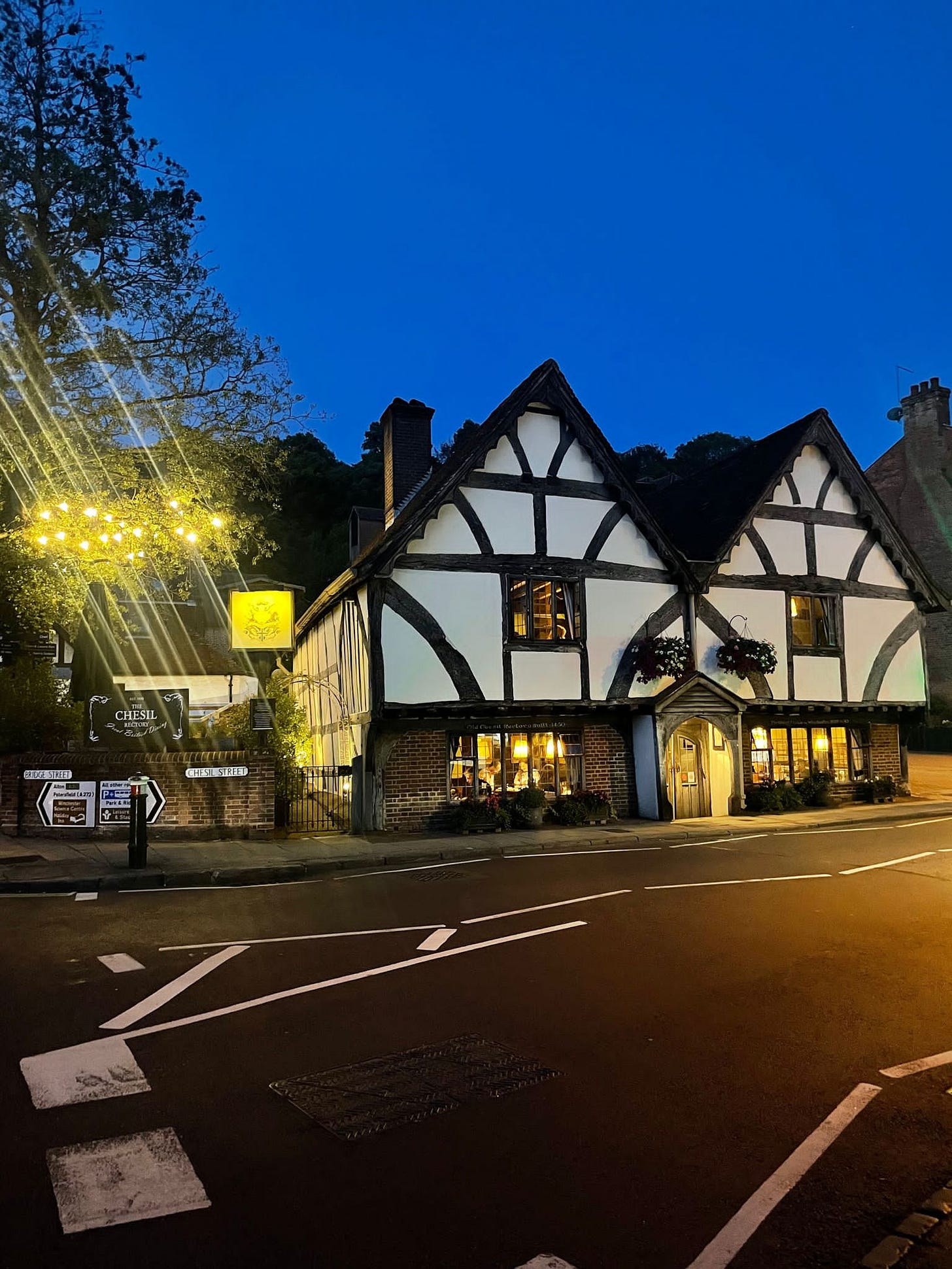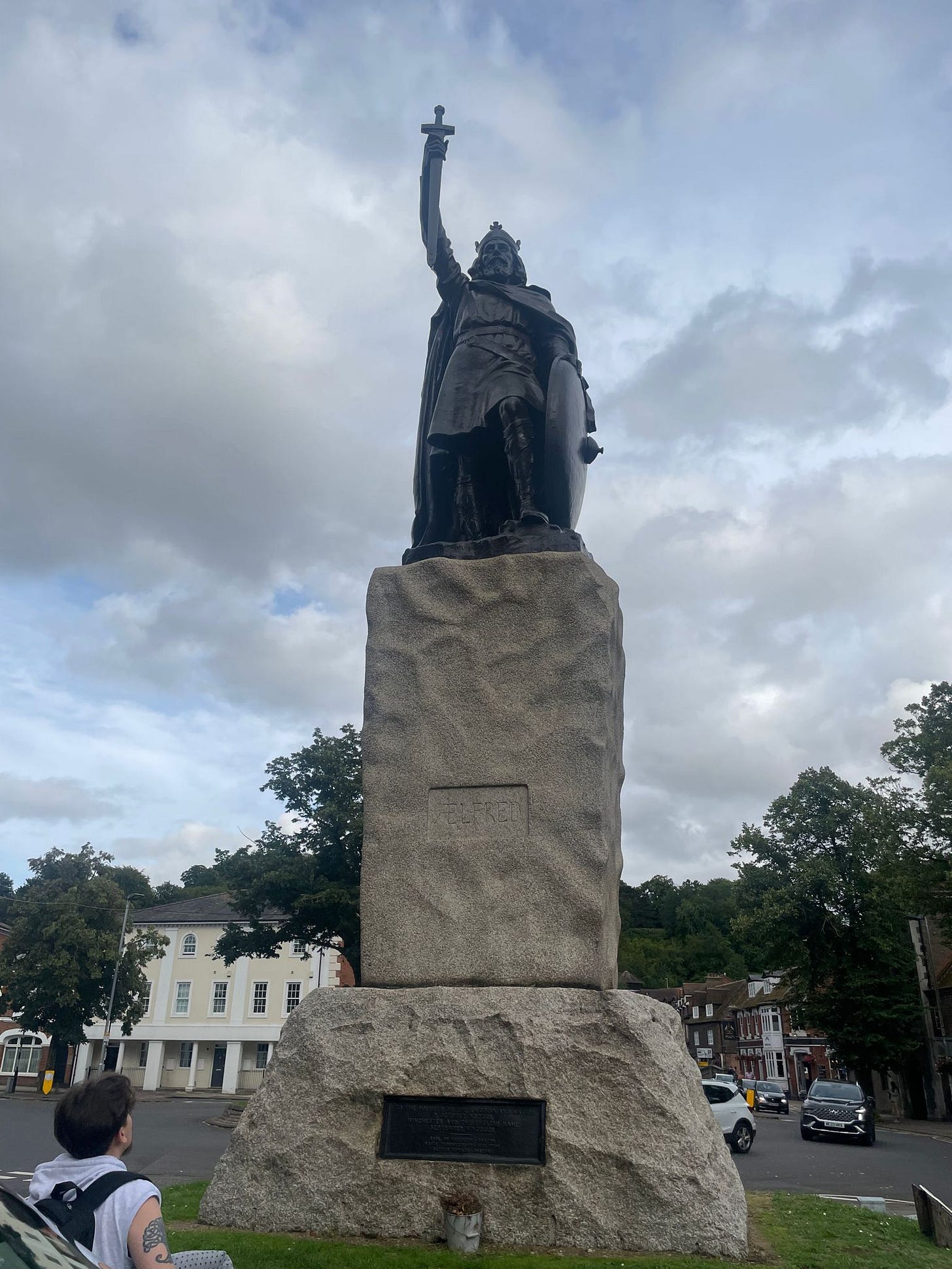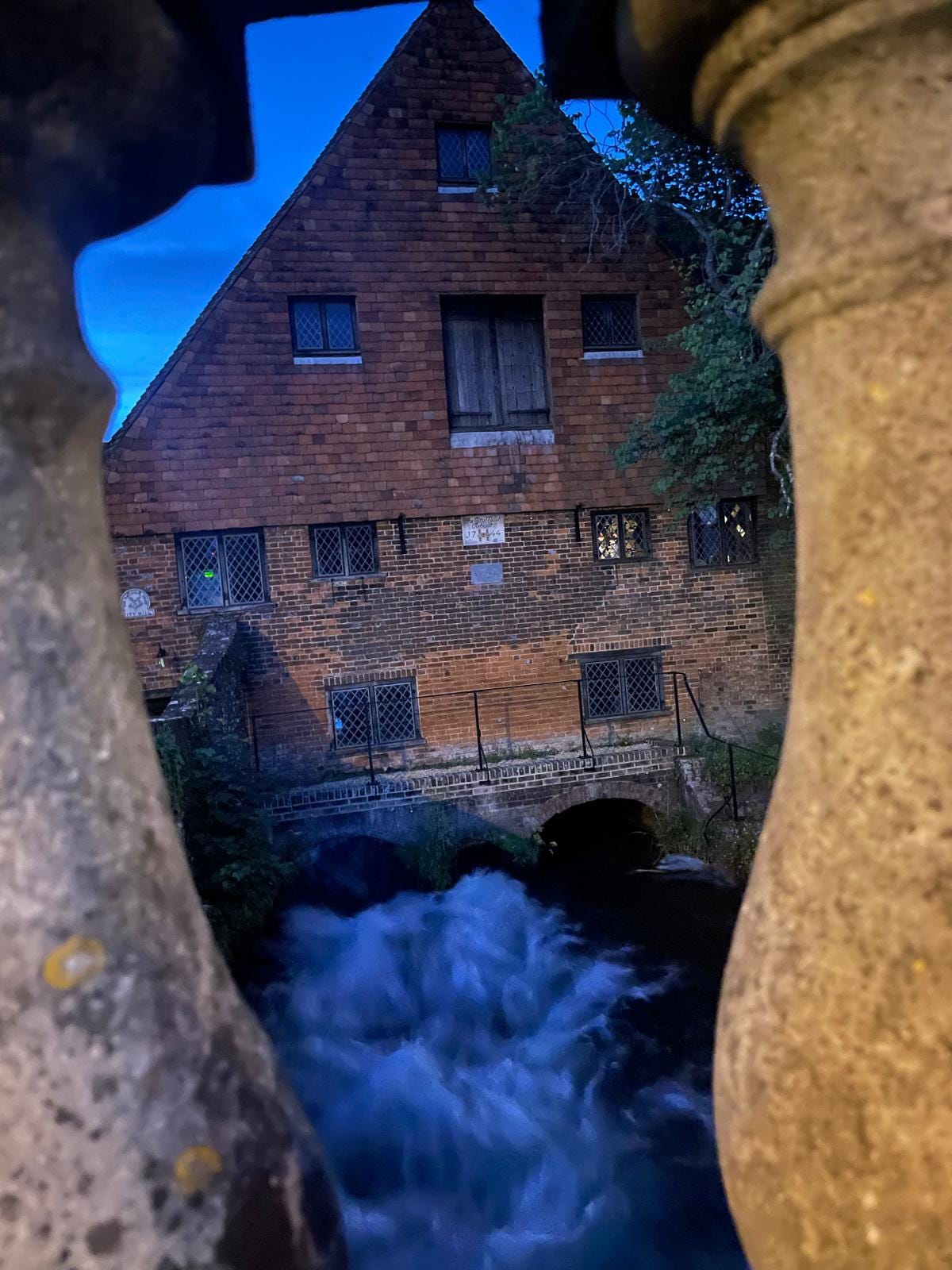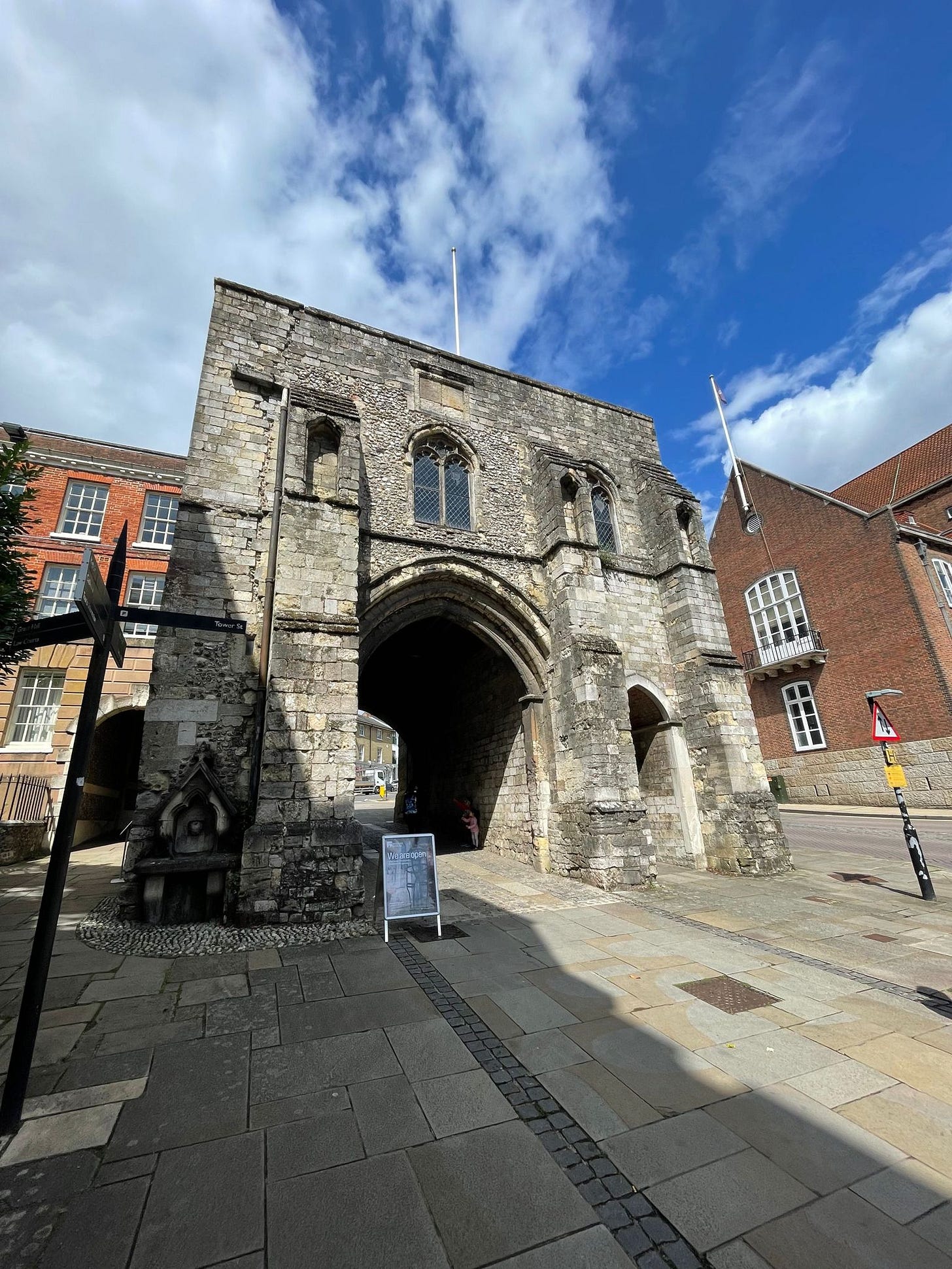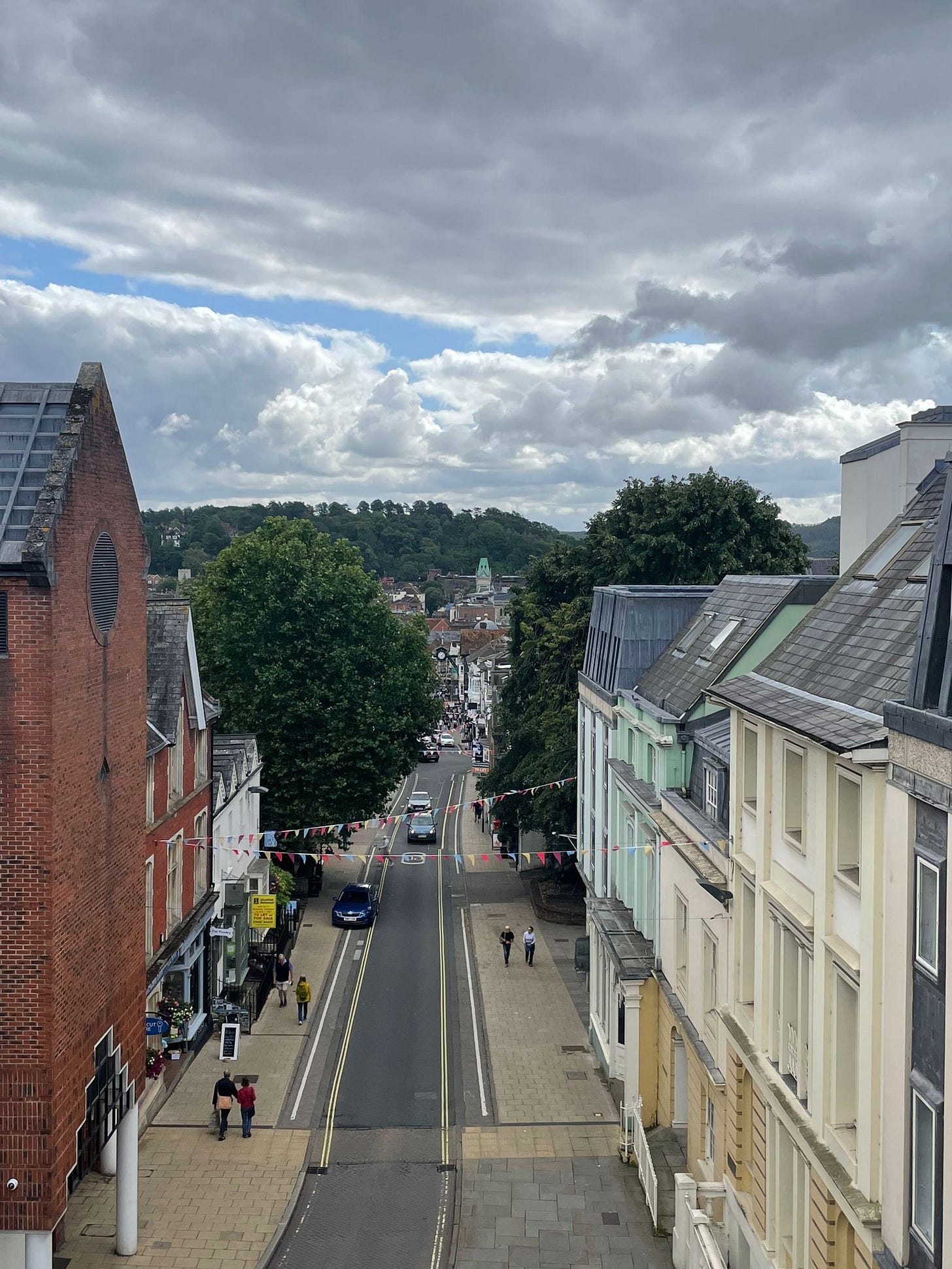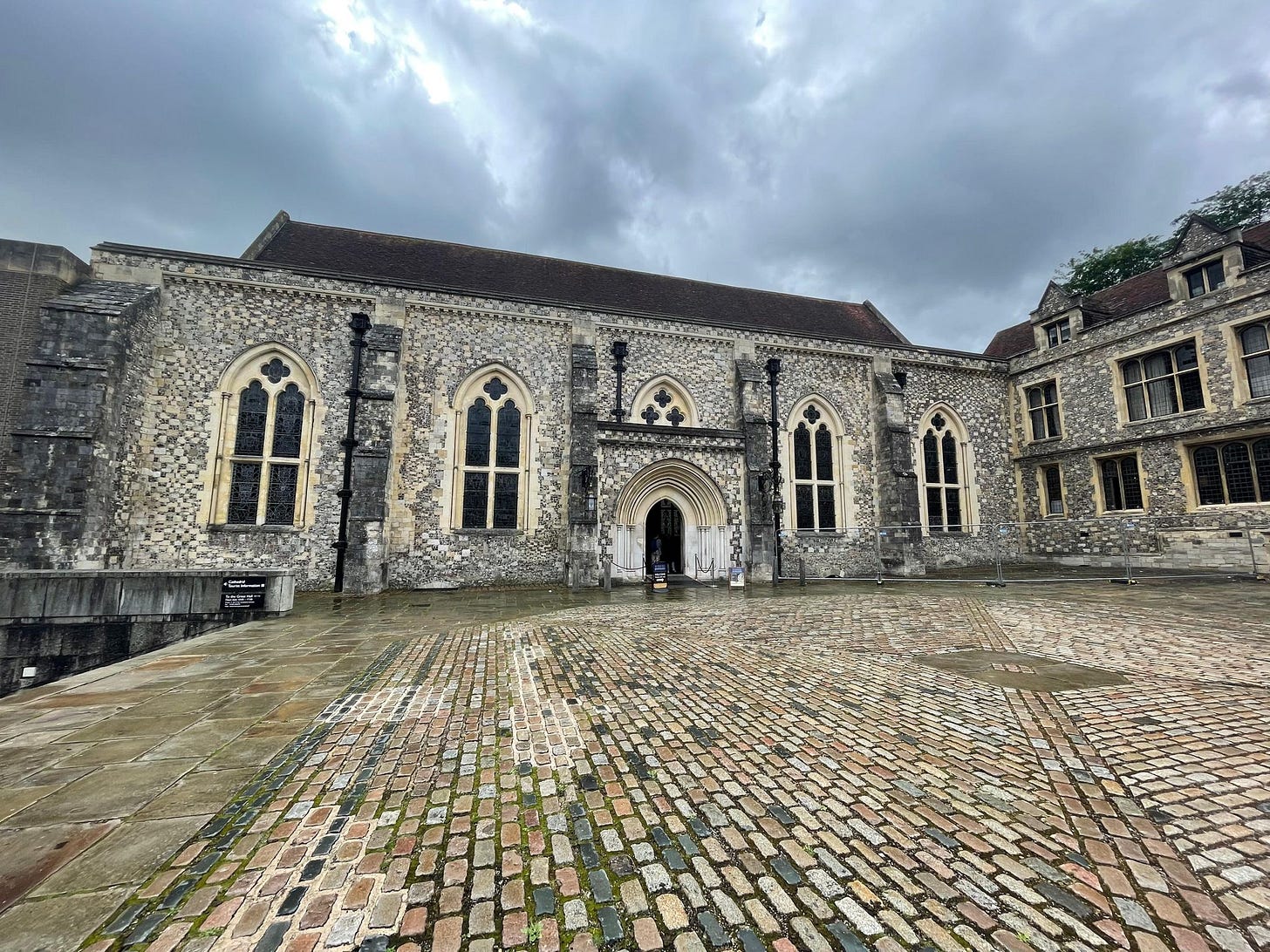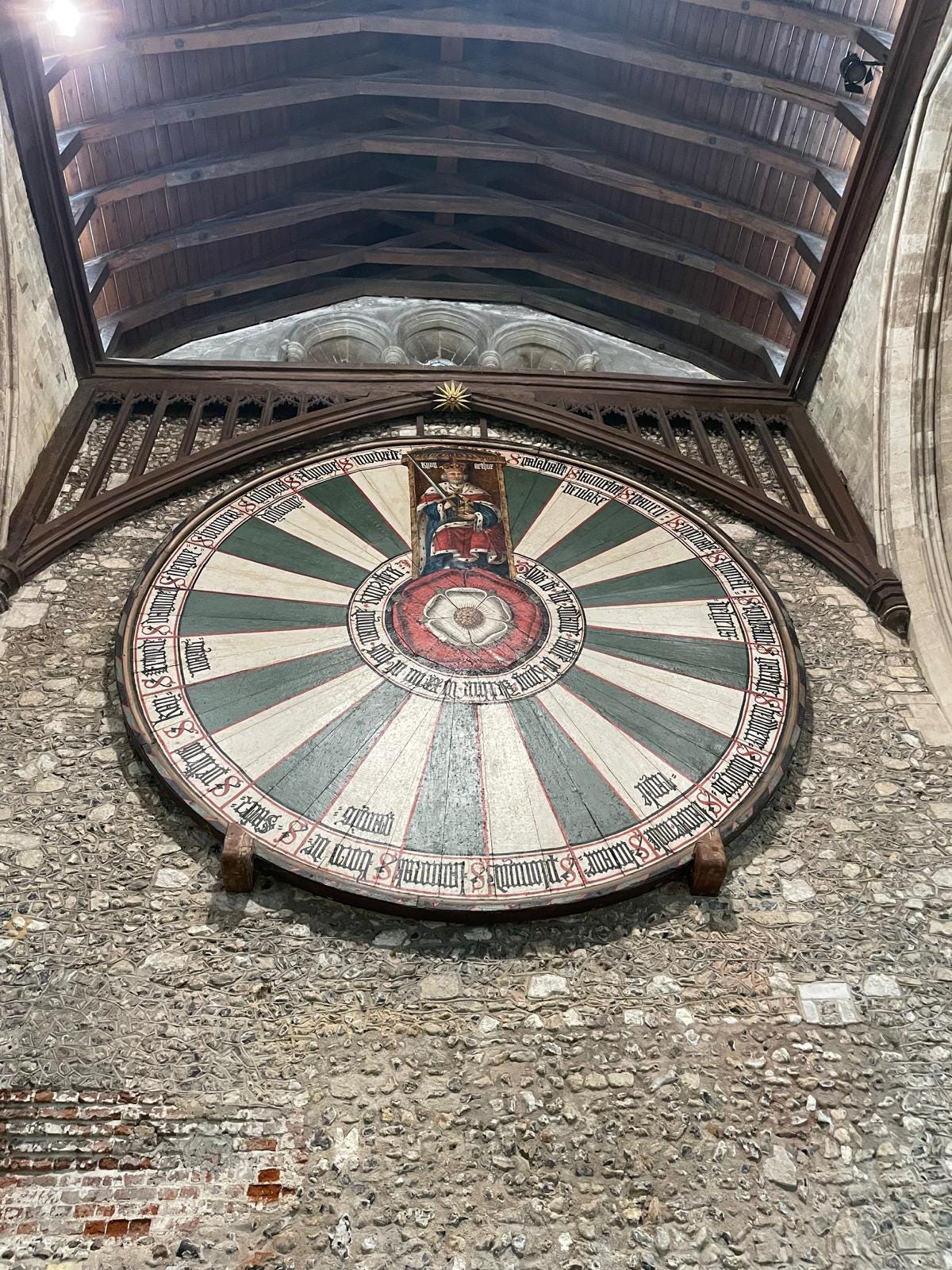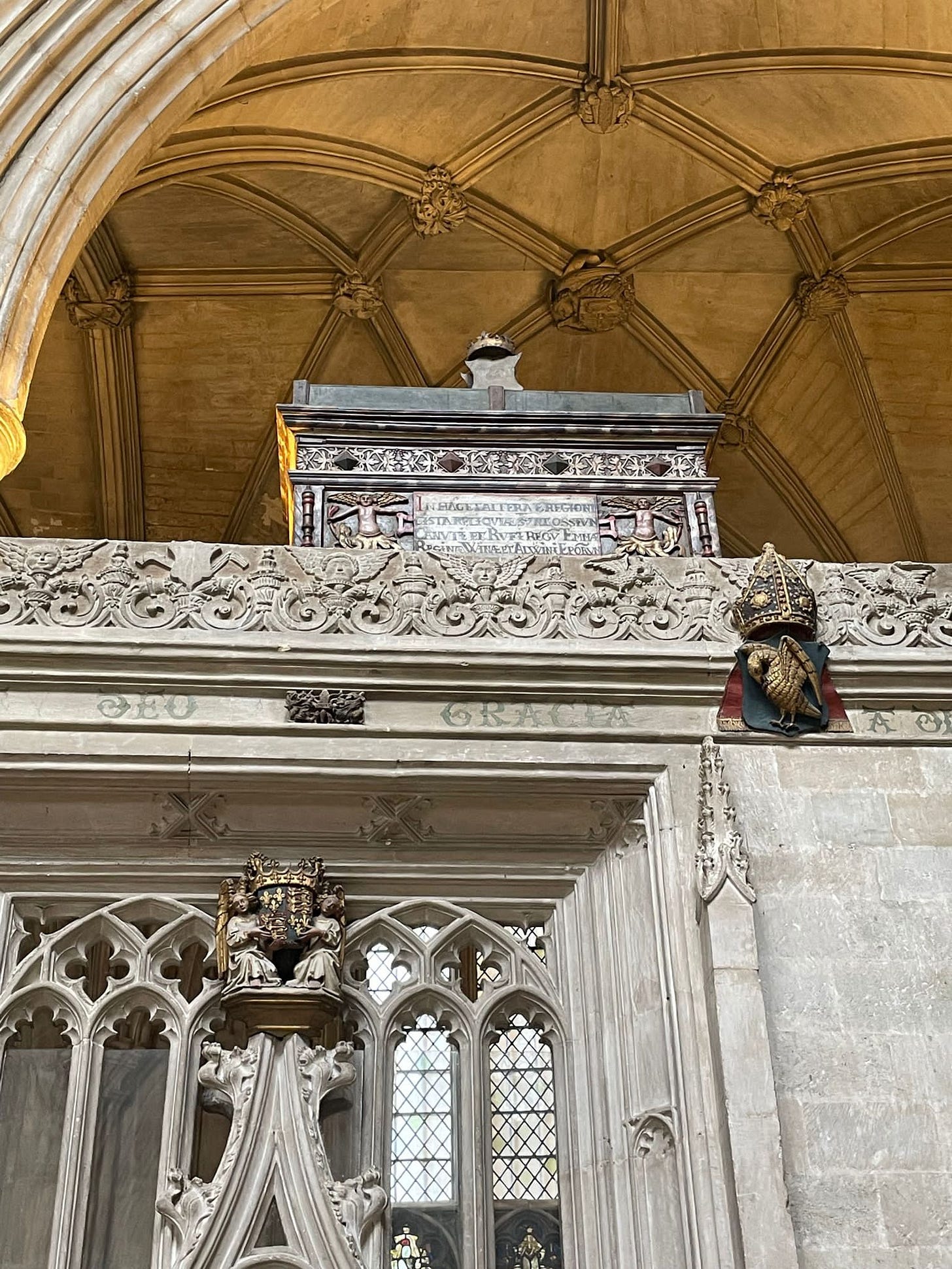Flowerdown Pilgrimage - A Pagan Guide to Winchester
Embarking to Winchester on pilgrimage; is it worth it?
For Rose.
Setting out of the front door often fills a traveller with great apprehension. More often this is the case for long journeys without clarity of destination nor return. Perilous is the road not yet tread, if one is not ready to face it. This was the lesson I and my colleagues learnt whilst on a walking pilgrimage to the West Country late last June.
And it is those lessons that have nourished success in my pilgrimage to Flowerdown Barrows this weekend passed.
This is the account of my journey to these discreet Bronze Age burial mounds, and the sights I saw in the City of Winchester. This shall be a first (and certainly not final) recounting of my pilgrimages - for I have gone on many untold, and have many more to come in my years Gods willing.
In the great Germanic spirit of wayfaring, let this act as a travel guide for the wandering Pagan in Winchester old.
I. Introduction (and a Brief History)
It was a rainy day we left the homestead and rode the beaten path to Winchester. Under a grey sky is certainly not welcome when spending such a time away, but weather is only a setback to those who allow it to be so. What is water to the wandering after all!
My first impression of the city was just how out of time it felt. Despite staying in the heart of the semi-medieval town centre, with all the trappings of traditional Tudor architecture amid modern concrete streets, it was resonantly out of time. The bustle of London left back at the Thames, the home of the River Itchen was a breath of fresh air as we strolled the backstreets and marvelled at the scenery before us.
The Chesil Rectory Pub, Winchester; July 2023.
Winchester is old, to say the least. The earliest settlement around the city date back to three obscure Iron Age hillforts - situated at St Catherine’s Hill, Worthy Down and Oram’s Arbour respectively. By the late Iron Age an oppidum (a sort of large, fortified settlement common to the Celtic La Tene culture) had emerged from the three, as serves as the basis of what we would call Winchester proper.
It has changed hands several times over the centuries - settlement by the Celtic Belgae as Wenta (Proto-Celtic Wentā; place, town)1, Roman occupation as Venta Belgarum (Latin Venta Belgarum; town [of the] Belgae)2 until the final conquest by the English. The city still bears its etymological roots in its modern name as Winchester (Old English Wintanċeastre; town [Venta] fort)3.
Under the reign of King Alfred the Great in the late 9th Century, the old Roman street system was destroyed, and a new grid was put in place. Its original purpose was for improved defence against Viking raids, and it still serves as the basis of Winchester’s layout to this date.
As we moved street to street, we saw how this plan made for easy footfall. Winchester is built in to a hill toward the Westgate (more on that later) and is hardly a challenge to traverse even on this side. There is a most excellent market held on Saturdays and Sundays with a wide selection of artisanal wares, organic produce and craft supplies.
The old market town has lost none of its old market it seems!
II. Statue of Alfred the Great
Statue of King Alfred the Great, Winchester; July 2023.
Arriving on the East Gate, we first came across this magnificent bronze construct as we passed by The Broadway. Designed by the renowned sculptor Sir William Thornycroft, it was erected in 1899 to mark one thousand years since the King’s death. Cornish granite compromises a double foundation for Alfred - stood proud with cross to the heavens.
Despite the clear Christian imagery of the statue, seeing such the cross held aloft in the light of day evokes powerful solar symbolism. It may be just under another thousand years since the last Anglo-Saxon dynasty reigned over our lands, but this memorial to one of its most famous monarchs remains so.
III. River Itchen
As you cross the City Bridge you will be upon the River Itchen. The crash of the waters course is a din so loud you honestly can not miss it.
The river flows north from the mouth of the Southampton Water and stretches 26 miles towards New Alresford. Renowned as one of the world’s best chalk streams, it is still used to this day as a fly fishing hub. Several historical mills still dot its stretch (one even in use as a restaurant - Abbey Mill). The most prominent of these however is Winchester City Will, with a successful restoration to full working order by the National Trust in 2004.
It is the oldest functioning water mill currently in the United Kingdom - dating to at least 932CE.
Winchester City Mill from City Bridge, Winchester; July 2023.
As you walk along the river, an open-plan restaurant overlooks the path with hanging baskets. A wall begins and continues from its build and emerges in to the only visible section of the city’s Roman wall remaining. It’s construct dates to the 3rd Century CE and encompassed, in its day, an area of 144 acres.
Walls such as this can be found all over Britain, and are a lasting reminder of the Roman occupation that threads in to the rich historical tapestry of our island nations.
Remains of the Roman city wall, Winchester; July 2023.
Lastly (and of great worth to the Pagan spirit) we see the treasure of the River Itchen. As you embark along the wooden railing that holds back flesh from water, the strength of ancients fills your chest. The cycles of generations past reverberate in the present, as memory and future collide in magnanimous timelessness. An age of Gods and heroes resonate in the here and now, and the wights of the River Itchen are thus found…
Oak tree on the River Itchen, Winchester; July 2023.
I have lovingly dubbed this the Itchen Oak and, while it is far too public to hold a Blōt under amongst a city of non-believers, I welcome you all to spend time with it. I made a small prayer as we passed so the wight within may know that we - as Heathens, still cross its roots.
What? Did you think it would be anything other than a tree?
IV. Winchester Westgate
Winchester Westgate, Winchester; July 2023.
Upon reaching the peak of the sloped high street you will find the Winchester Westgate - one of two surviving early English fortified gateways that formed Winchesters city walls. The prevailing composition of the stonework is early English, with changes evident between the 12th - 14th Centuries CE. A water fountain is built in to the gate, but is non-functional.
A staircase is built in to the side of the gateway that takes you to the interior. The first floor consists of a museum documenting the gates history through informationals and artefacts. Two keyhole gunports face westward from the gate - the oldest of their type in England. The ceiling is of a painted Tudor-era design.
The rooftop is a constructed platform above the original battlements. There is a great platform that allows an overlook of the entirety of Winchester - all the way to the Alfred the Great statue in the distance. It is the highest point I reached on our pilgrimage and was a wonderful experiencing to see the city from such a height.
View from the Westgate, Winchester; July 2023.
Just beware of the bird… I will say no more!
V. The Great Hall
The Great Hall, Winchester; July 2023.
Entering the Great Hall, you would be forgiven to not think you have entered a cathedral. Arched roofs overlook the spacious interior of stained glass windows, crested with the house arms of kings and bishops. Two great wedding arches stand at the end of the hall - a monument built to mark the marriage of King Charles and the late Princess Diana.
To the windows we can count the Kings of England amongst the names - twelve names to each window. The most interesting of these is Cerdic, Pagan King, ancestor of the House of Wessex and founder of its namesake kingdom.
Crests of the Kings of England in the Great Hall, Winchester; July 2023.
Cerdic (Proto-Celtic Karatākos; beloved, pleasing)4 is an ancient ruler seeped in mystery. Despite the apparent Brythonic origin of his name, the sole account of him is in the Anglo-Saxon Chronicle - a 9th Century CE Wessexian manuscript. He is listed in such as a direct patrilineal descendant of Woden5:
A. 552. This year Cynric fought against the Britons at the place which is called Searo-byrig [Old Sarum], and he put the Britons to flight.
Cerdic was Cynric's father, Cerdic was the son of Elesa, Elesa of Esla, Esla of Gewis, Gewis of Wig, W^ig of Freawin, Freawin of Frithogar, Frithogar of Brond, Brond of Beldeg, Beldeg of Woden.
All subsequent West Saxon Kings, progenitors to the later English royal dynasties to come, claimed a descent from Cerdic and, through this, of Woden. Woden is attributed as our God of divine kinship with a very clear example in this tradition.
A statue of Queen Victoria, cast of a hollow bronze, sits in a corner of the hall. To the other side hangs an object of incredible renown - the Round Table of King Arthur.
The Round Table of King Arthur, Winchester; July 2023.
Built of sturdy English oak, this late 13th Century CE replica of the mythical Brythonic Kings knightly table is of an impressive scale. Measuring 5.5 metres across, it hangs in the centre of the hall and weighs in at a huge 1.2 tonnes. The decoration is not original however.
To those with an eye for detail, you may see the Tudor Rose emblazoned at its core. King Henry VIII had the design commissioned in celebration of his reign - even going so far as to have himself depicted as the figure of King Arthur. On each of the surrounding twenty four panels, the name of a legendary Knight is displayed.
The intention of the design is clear. As the first King to assume the throne as a truly born Tudor, Henry was the blood that united the Houses of York and Lancaster. With the memory of the War of the Roses only ending a generation before, it is natural the King would look to legitimise his rightful rule. What better way to do it than by making oneself appear as a legendary monarch of yore?
Wedding Arches in the Great Hall, Winchester; July 2023.
As we wandered the remainder of the building, taking in the exterior sights and paintings of the Long Gallery, the history of it all captivated me. The Great Hall has served as not just the only standing remainder of Winchester Castle, but also a law court throughout the years.
VI. Winchester Military Quarter
A good stop off for the martially-inclined (which should be all Pagan men!) is the Winchester Military Quarter. Consisting of six adjacent museums dedicated to a different area of military tradition, they are a good detour to kill a few hours looking at relics of bygone conflicts.
An officer’s sword in the Adjutant General’s Museum, Winchester; July 2023.
I did not have the time to spare to visit every museum unfortunately, but we did take a comprehensive visit of the Museum of the Adjutant General's Corps. The tour details the evolution of the Hampshire Regiments uniform and equipment from the Anglo-Boer War to the First Gulf War. There is opportunity to play with uniforms out of a box, but I sadly had not the time for play…
VII. Winchester Cuisine (Historic Pubs)
A pilgrimage is devoid of a wellness of mind on an empty stomach. You can attribute this quote to me, as I would be remiss not to mention some of the great food you can find in the city. Two come to the forefront - The Golden Lion and the Royal Oak.
The latter can be found down a back alley off of the town centre. While ran as a Greene King, its menu features a boast of exclusives and specials that reflect a love of localism. Who would want to waste their time in Nando’s when you can try 1800s Glastonbury cheese served on a locally-sourced sourdough slice of toast? Pagan ethos for the hungry traveller.
It also has a bit of history about itself. The Royal Oak, alongside many pubs renamed after the Restoration, was a Royalist hotbed during the English Civil War. Winchester saw its share of action during the conflict, and the men for King drank in these very walls. It is also billed as the oldest pub in England, but that is a fiercely debatable topic.
The Golden Lion is a slightly less unique case. While its food selection is still outstanding, it is to modern opinion that we can give it a nod for a stop-in. Well done steaks (there’s a joke in there somewhere), a chef with an attitude for taking the piss and it being dog friendly - you can not go wrong really.
VIII. Winchester Cathedral
Winchester Cathedral, Winchester; July 2023.
I would be a poor example of a Goði if I ignored Winchester’s central hub of faith - even if it is Christian. It is important to observe all facets of our cultural legacy as we fuel the Pagan Revival for a truly orthodox point of view. What is contained within these walls may surprise you.
The history of the structural build itself has seen several iterations. The original construct, dubbed the Old Minster, dates to 648CE. It saw expansion during the Norman reign, and further change with Gothic remodeling from 1202CE onwards. The persistent repetition of Gothic architecture in Northern European cultures, even in spite of blatant Christianisation, is a hallmark of our cultural identity.
Enough of the house of worship - let us look at the sole focal interest of this chapter.
Sigmund Stone within the Winchester Cathedral, Winchester; July 2023.
A remarkable relief on carved stone sits on the first floor of the Cathedral. It depicts the Anglo-Danish King Cnut slaying a wolf in rescue of his nine brothers. Despite the Christian monarch having many stories of his piety to his God, the stonework here contains clear Pagan allegory.
Wolves have often been associated with our Lord Woden - as well as ferocity and lawlessness. The number nine is equally sacred to us as Pagans, reflecting many concepts within our Eddas numbered as such. As such, there is a seeming religious overtone that harkens back to Denmark and England’s old ways.
There is not enough context to know if this stone represents the rule of law or a Christian account of “saving” ones clan from Valfather in a wolfs guise. Whatever it may be, it is interesting for the period of history it pertains to.
One of six mortuary chests in Winchester Cathedral, Winchester; July 2023.
The remains of King Cnut can be found in several of six chests within the central structure of the cathedral. While each is etched in Latin to indicate its contents, the remains that lie within are actually random.
During the English Civil War, it is accounted that Parliamentarians stormed the church and, having no care for the royal remains within, threw the bones through the stained-glass windows. The clerks of the dioceses had a hard time working out which femur belonged to whom during cleanup, so the remains were arbitrarily placed.
Genetic testing is underway to put this mystery to rest, and return the remains to their correct chests. While a point of historic preservation, the Wodenic spirit within me can not help to chuckle at a foreign Kings bones finding flight through Christian windows…
IX. Flowerdown Barrows
With knowledge gained and sights seen, we made tracks under heavy rain and navigated to Flowerdown Barrows to complete the pilgrimage. A wooden gate separates the site from the outside world, with residential buildings to either side of its wide berth.
Three barrows stand within its grounds - two bowl barrows and a well-kept disc barrow. Despite its dating to the Bronze Age, these ancestral burials have never been unearthed. A rarity amongst such sites and, in my humble view, a reason more to warrant a pilgrimage
Three prayers were made to Lord Ing - one for each tomb of those resting below. As our God of the Burial Mounds, it is he who governs their domain and to whom deserves adoration for the completion of this sacred journey.
Prayer on Flowerdown Barrows, Winchester; July 2023.
X. Final Thoughts
Homeward I fared with affirmed joy in my travel. Often it is disheartening to lose your way on the road - onset hardship often permeates beyond a failure if you let is sink in too deep. To shake off the coil of a bitter lesson within the same month and complete a labour for the Gods? That is truly a awesome endeavour.
My lasting thoughts on Winchester as a whole is thus; while not as relevant as in days of old, Winchester is still a hotbed of beauty and affluence. It is as much the duty of us, as English Pagans, to visit all corners of our beautiful home. Whether in the rowdiness of a market town or contemplation in a quiet woodland - you do a disservice to the soul to not see the old capital of the West Saxons. And…
… though here at journey’s end I lie in darkness buried deep, beyond all towers strong and high, beyond all mountains steep, above all shadows rides the sun and stars for ever dwell: I will not say the day is done, nor bid the stars farewell.
– Sam, The Lord of the Rings
Wiktionary.org, Reconstruction:Proto-Celtic/wentā, accessed 4th August 2023 <https://en.wiktionary.org/wiki/Reconstruction:Proto-Celtic/went%C4%81#Proto-Celtic>.
Wiktionary.org, Venta Belgarum, accessed 4th August 2023 <https://en.wiktionary.org/wiki/Venta_Belgarum#Latin>.
Wiktionary.org, Winchester, accessed 4th August 2023 <https://en.wiktionary.org/wiki/Winchester#English>.
Wiktionary.org, Proto-Celtic/Karatākos, accessed 4th August 2023 <https://en.wiktionary.org/wiki/Reconstruction:Proto-Celtic/Karat%C4%81kos>.
The Anglo-Saxon Chronicle (J.A. Giles revision). A. 552; Pg. 10; G. Bell and Sons Ltd, 1914.





